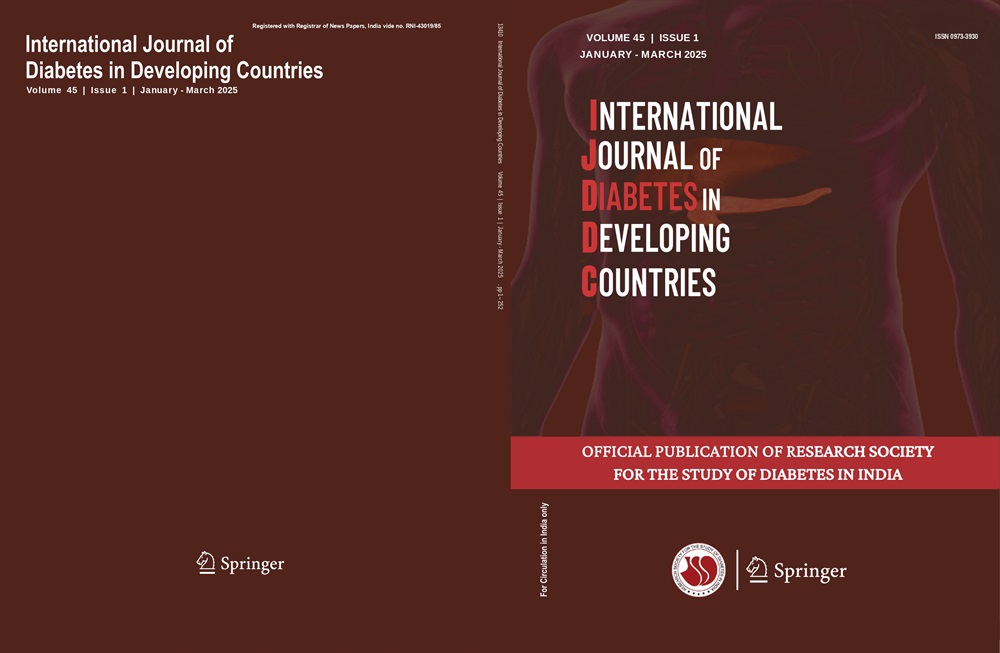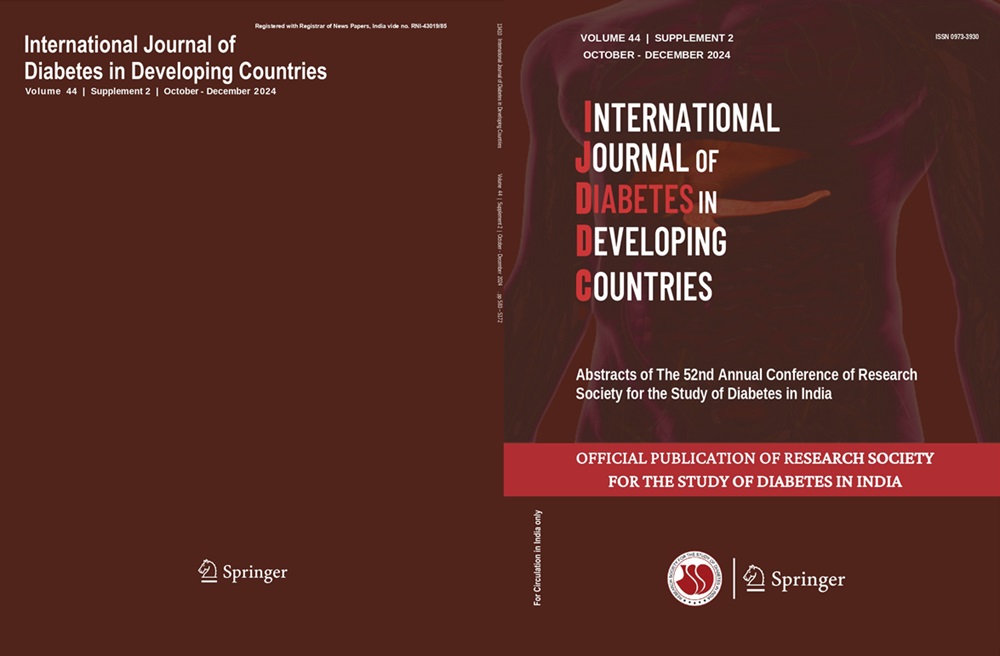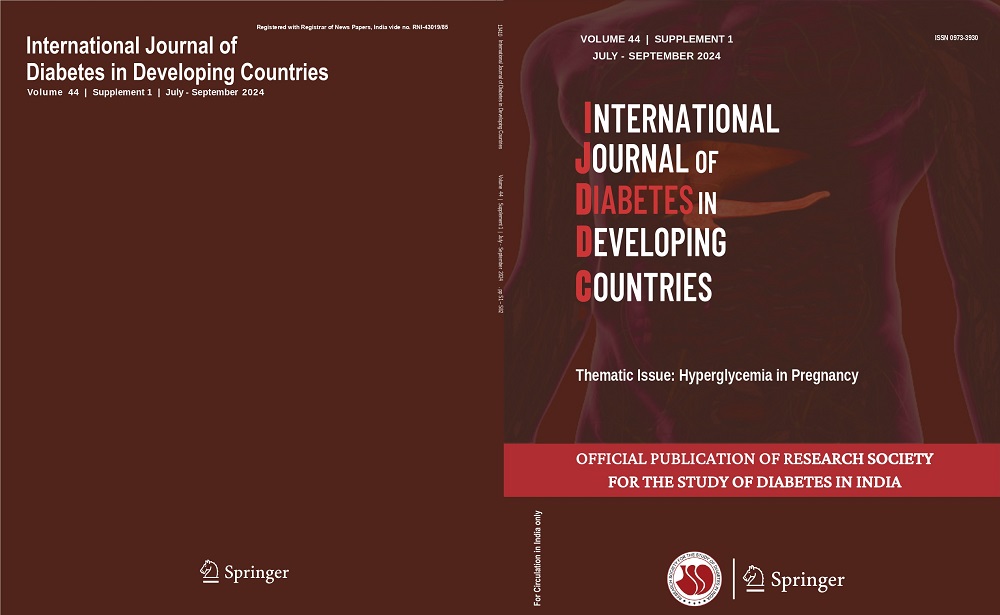Anjali M., Meenakshi Khapre, Ravi Kant, Prakash Kumar
Keywords
Diabetes • Distress • Validation
Background Diabetes-related distress is the emotional burden and worries while managing chronic disease like diabetes. It remains mostly undetected because most patients do not realize their emotional problems. Diabetes distress affects glycemic control and makes the patient more prone to complications. Diabetes Distress Scale (DDS-17) developed by Polonsky is widely used to measure the diabetes distress in different part of the world.
Objective To translate the DDS-17 into Hindi and validate the DDS-17 (H) among adult patients with type 2 diabetes in India.
Methods The DDS-17 was translated to Hindi and back translated by independent bilingual translators. Face and content validity of the scale was evaluated with subject experts and a sample of the target population. A cross-sectional validation study was conducted for analyzing construct, convergent validity, and reliability of DDS-17 (H). Eligible participants were enrolled from the field practice area of a tertiary care hospital.
Results The Content Validity Index of the scale was 0.99 and the Content Validity Ratio was 1, which was significant. Exploratory factor analysis of items supported a four-factor solution. Cronbach’s α coefficient for the scale was 0.958. The scale had a positive correlation with Depression Anxiety Stress Scale (DASS 21), p = 0.78, p < 0.000. Among the 200 enrolled participants, DDS-17 (H) assessed 18.5% of participants with moderate diabetes distress and 16.5%, high diabetes distress.
Conclusion The DDS-17 is found to be valid and reliable in the Hindi language and can be used for early identification of diabetes distress in primary care settings.




